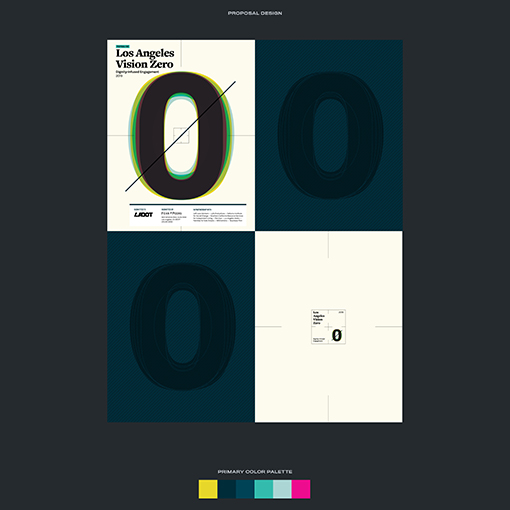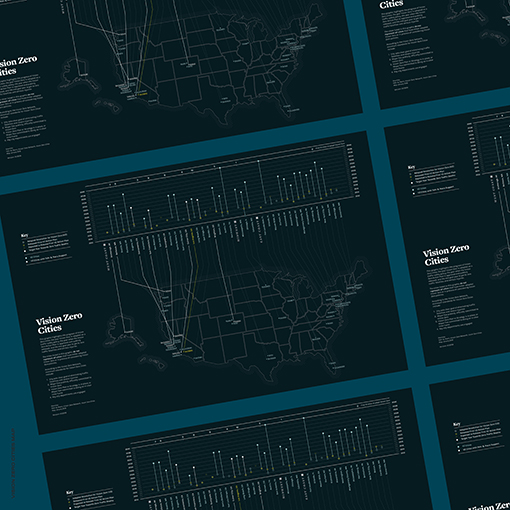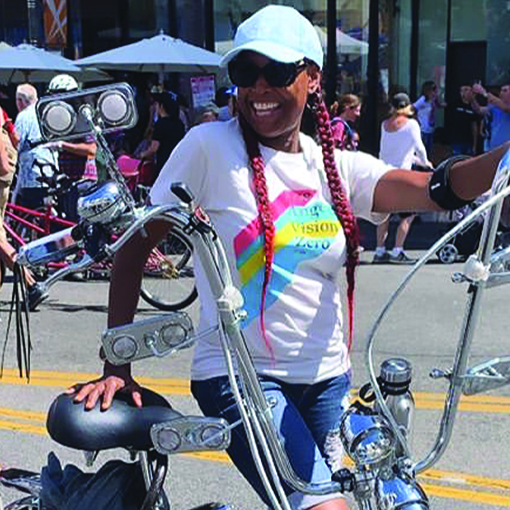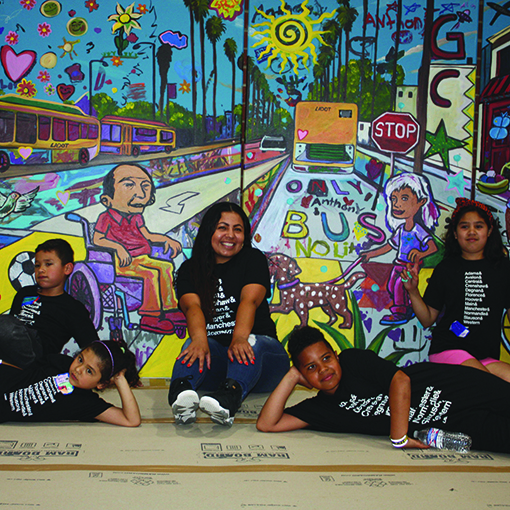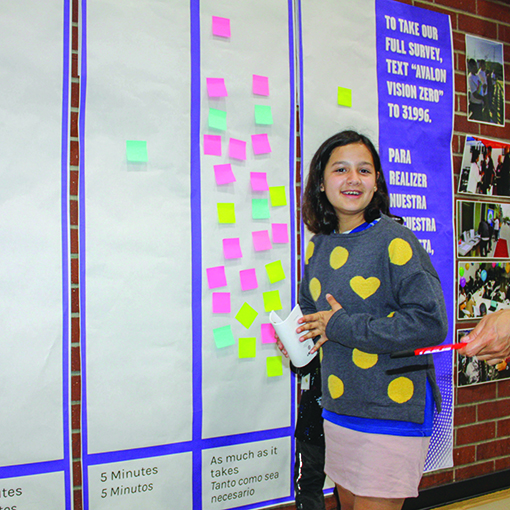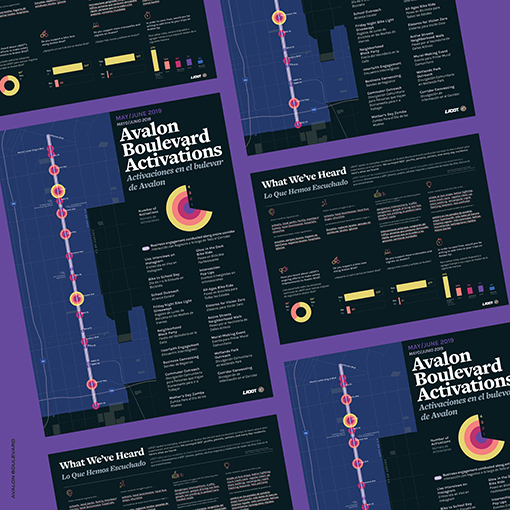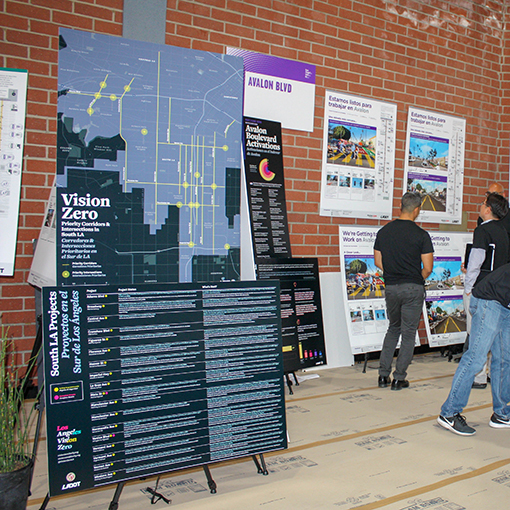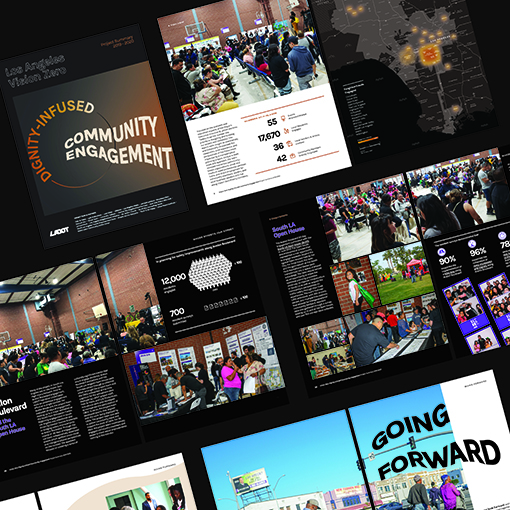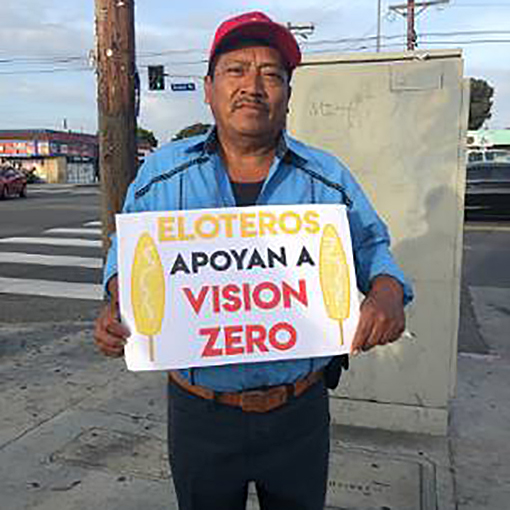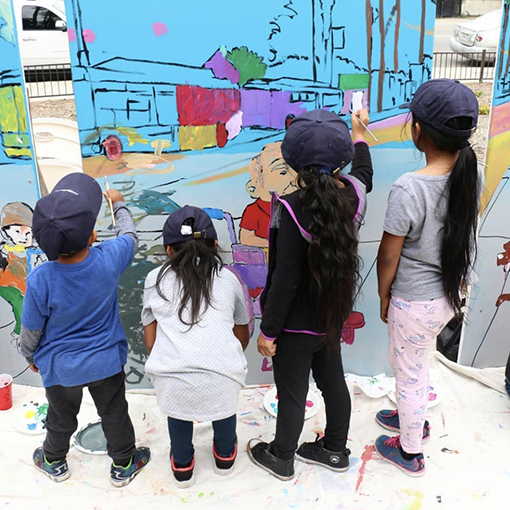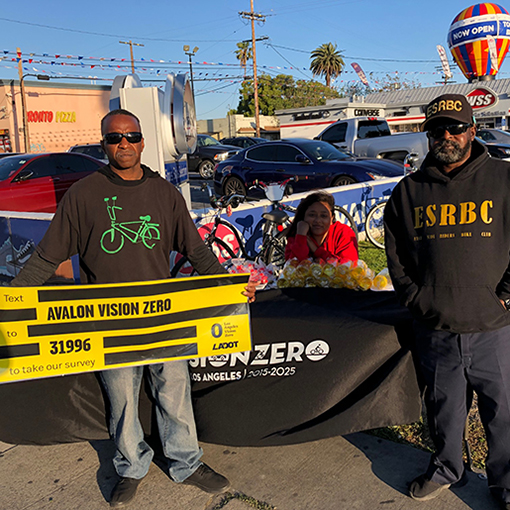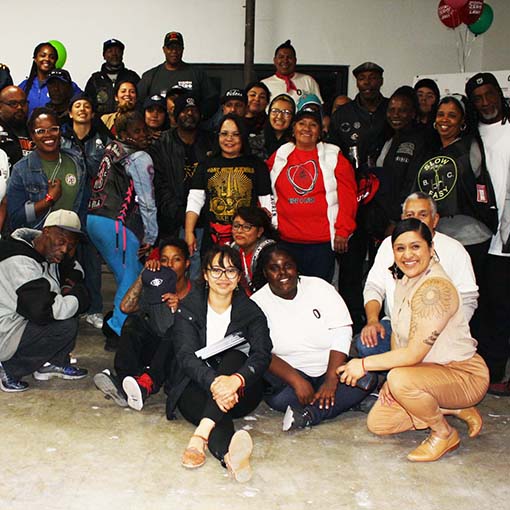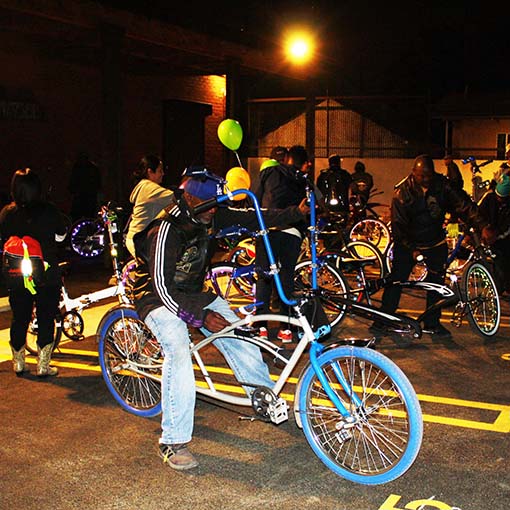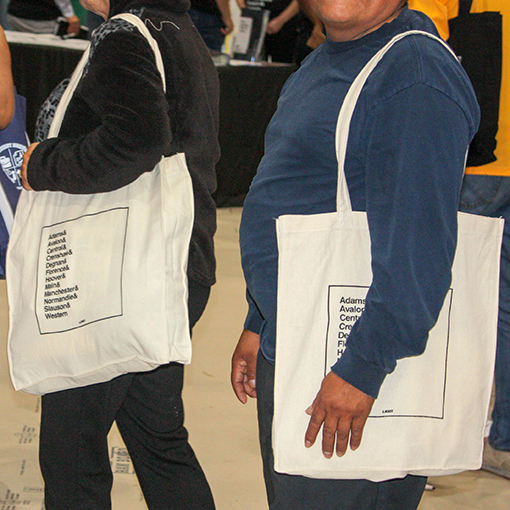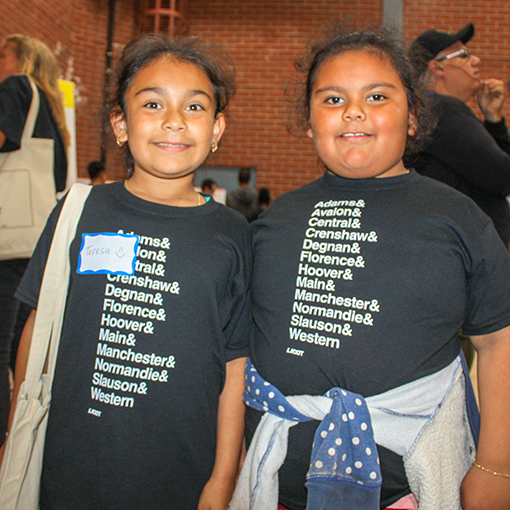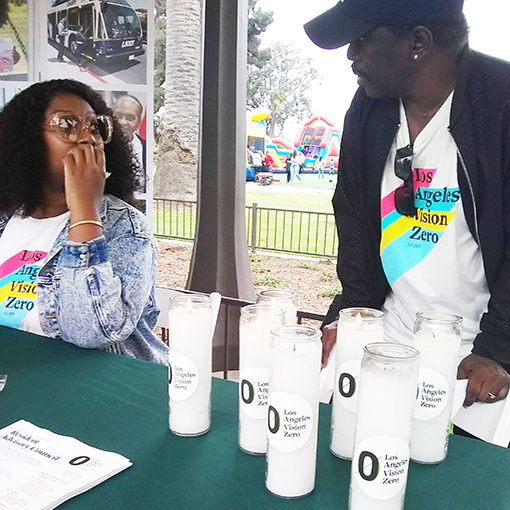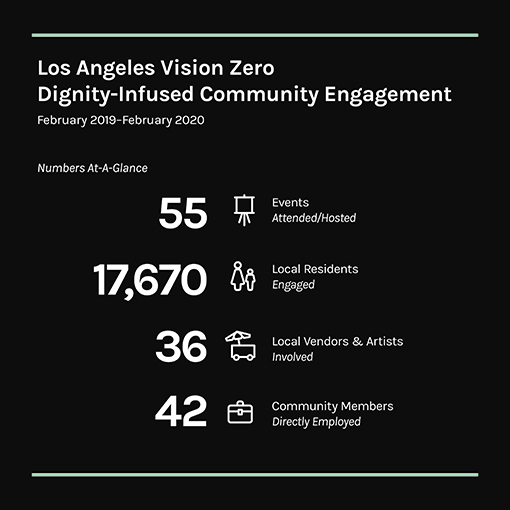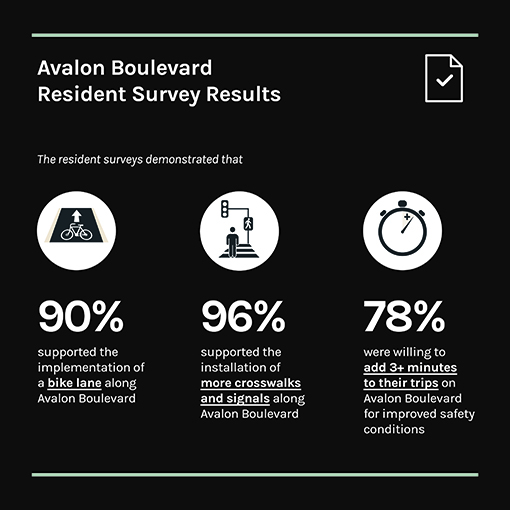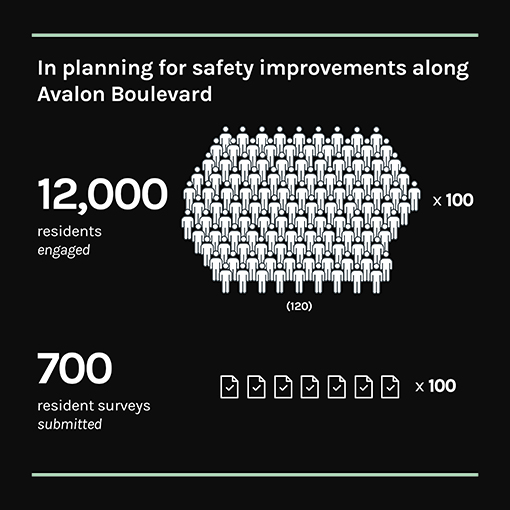Evolving Visual Communications in a Dynamic World
Engaging 12,000 People in 35 Days
Capturing attention in a busy and complex world is incredibly challenging. How can it be done in a matter of seconds?
Well-designed, targeted visual communications have the potential to cut through the noise, encourage interaction, and even drive meaningful change through the way stories are told and ideas are approached. In the context of community engagement, visual communication elevates public participation by making complex topics approachable and encouraging calls to action. By partnering with the people who live, work, and play in the communities we serve, we can craft thoughtful design to shape purpose in our projects and communities.
We recently partnered with the Los Angeles Department of Transportation (LADOT) on a first-of-its-kind Vision Zero Dignity-Infused Community Engagement (DICE) project. Together, we took on the challenge of navigating visual communications through the lens of equitable engagement. With a focused and collaborative process, the project’s visual communications work created an identity, elevated participation, and instilled a sense of urgency around the need for safety improvements. Through the process, unexplored areas for new strategies and several worthwhile takeaways emerged. Those areas are explored individually below.
Balance Accuracy and Approachability
It is a constant balancing act to figure out how to make a visual captivating while still showing solid, approachable data. In partnering with our clients, we often explore and establish those conventions at the forefront. For this project, our client gave us the creative freedom to develop eye-catching project branding and apply it across our engagement materials.
Approach Branding with the Community
As part of the engagement efforts, the project team interviewed and hired a group of residents from prioritized corridors to be part of a “Vision Zero Street Team” and help get the community directly involved with the project. Meanwhile, Fehr & Peers was tasked to produce some on-trend, budget-friendly branded gear for the Street Team to wear and share at the community outreach events. When it all came together, it was amazing to see the Street Team feeling empowered and connected to the project while proudly wearing hats, t-shirts, and jackets designed by our creative team. The opportunity to take on unique branding for a community-oriented project and then see that work reflected on everyday community members affirmed the importance of designing with inclusive and accessible visuals. It revealed the power of finding different ways to reinforce branding to elevate engagement for participants of all ages, whether with clothing or other creative ideas.
Translate Purpose and Meaning into a Visual Language
Color finds its way to most project visuals, but it is important to be strategic when making design decisions. Fonts, maps, infographics, and images all work as a cohesive system—every touch point of the visual DNA. It is usually never quite right the first try, as creativity takes time and touch points are refined iteratively and collaboratively. Below are some examples of how we carried, and evolved, the branding throughout our work for the Avalon Boulevard Corridor portion of the project.
Refresh the Traditional Engagement Approach
Partnering with the client and building off community-centric ideas, our engagement efforts gathered an unprecedented amount of responses. Through the course of 35 days, we collaboratively developed events which uplifted cross-racial and intergenerational perspectives on the corridor. Our approach focused on creating a series of culturally significant events that would engage residents, primarily low-income Black and Latinx communities. More than 12,000 residents engaged in planning for safety improvements along Avalon Boulevard, and 700 resident surveys were submitted. Memorable and significant events delivered in partnership with community members, artists, and leaders included a glow-in-the-dark bike ride, mural painting, block parties, lunches, youth events, live discussions, a dog day, and much more. Even a local elotero (street corn vendor) helped us reach people in the community. A massive bilingual open house was a high point in the engagement process, which drew over 1,000 attendees and featured children’s activities and opportunities for providing input and learning more about Vision Zero. The Street Team provided us with the ability to use local knowledge and lived experiences in our planning, which helped shape events that represented and understood community needs. Community-based organizations also played a key role in the engagement efforts, helping our team develop engaging and culturally relevant events.
The engagement process was deliberately rooted in equity and centered around the inclusion of neglected community voices, reaching participants by meeting them where they lived, and working alongside an amazing project team comprised of local community experts and transportation planning professionals committed to transforming the ways in which we engage communities today.
Additionally, our visual communications work brought impactful results to the engagement activities above and beyond the effort to inform residents and encourage participation. We designed and distributed branded Vision Zero promotional gear, with many items specific to the events that were held, including shirts, hats, bike lights, tote bags, water bottles, reflective slap brackets, and even dog bag dispensers. Wearing, displaying, and using these branded items, community members brought Vision Zero into their homes, sparked conversations in the neighborhood about safe streets, and became potential “brand ambassadors” for safety as true parts of the project and all it stood for. While civic change can feel inaccessible to many, these visual and tangible representations helped to build awareness and extended our LADOT Vision Zero project team’s work with communities that care deeply about traffic safety.
Engaging communities historically siloed from the planning process requires unique, customized, and culturally relevant approaches, but the resulting impact speaks volumes.
Start a conversation about engagement, visuals, and safety in your area with us! We’d love to hear from you and interact with your community.


